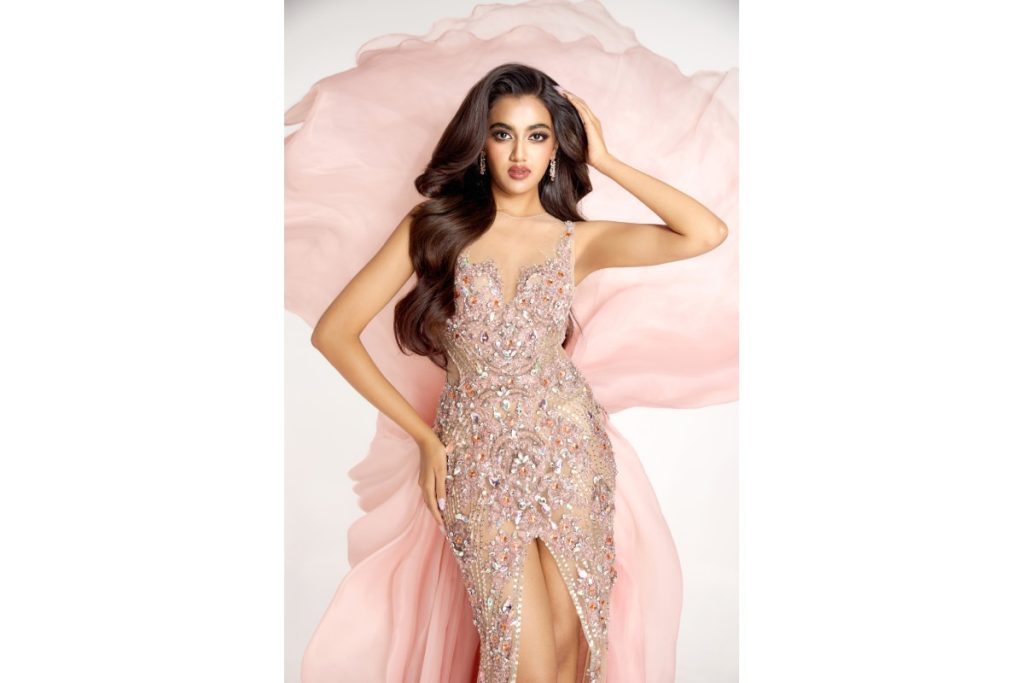“The Threads of Change – Why Sustainable Fashion Matters”
Thought leadership Opinion Piece on Sustainable Fashion by Sweezal Furtado. Meant for World Environment Day.
As a professional model and pageant participant, I have witnessed the evolution of the fashion industry from the front row in the past couple of years. Fashion has become responsible across the globe, from the corporate as well as consumer sides. I have walked many runways and red carpets, worn designer dresses and accessories, won some titles and crowns at beauty pageants and clicked for several fashion photoshoots. With time at a young age itself, I realized the responsibility of sustainability in fashion and everyday life.
The environmental impact of fashion industry extends beyond waste. Globally, the fashion industry consumes 93 billion cubic meters of water annually, leading to 20% of global wastewater. Synthetic materials, prevalent in many garments, require an estimated 342 million barrels of oil per year, and their production and maintenance release micro-plastics into our oceans thereby affecting the marine life of aquatic flaura and fauna.
India is the world’s second largest producer of textiles accounting to 4% of the global textile and apparel trade and a 9.7% CAGR growth. As per a recent study by KPMG, India’s textile industry was valued at USD 160 Billion, employing over 45 million people directly and 100 million people indirectly. This is a huge cornerstone of our economy. Unfortunately, this growth comes with environmental costs. The textile sector annually generates around 7.8 million tonnes of textile waste. According to research of another Big 4 PwC, the textile and apparel sector in India is a major contributor to water pollution and waste generation. These aren’t just corporate survey statistics; they represent the health of our rivers, the burden on our landfills, and the future we are shaping for generations to come.
Consumerism in India is witnessing an awareness and a mindset shift. A PwC survey revealed that 40% of Indian consumers are willing to pay up to 10% more for sustainably produced items, with 19% open to paying up to 20% more for ethically produced products. According to a Boston Consulting Group report, the sustainable fashion market in India would hit USD 9 billion by 2025. These numbers signal a clear shift: Indian consumers are becoming more aware and willing to invest in eco-friendly choices. This shift in consumer behavior indicates a growing demand for sustainable fashion. The sheer scale of India’s fashion consumption demands a conscious shift. Myntra’s recent ‘Sustainability Edit’ showcasing eco-friendly brands points to a growing supply-side response, yet the demand needs to amplify further. KPMG’s recent report also suggest rising awareness in the Indian consumer community for the environmental impact of their purchases and a section of people willing to pay a premium for sustainable alternatives. This consumer behavior shift is encouraging.
 Government initiatives, such as the Union Budget’s allocation of 500 crore INR for innovation and MSME empowerment, are encouraging steps towards a circular economy. Government’s MITRA (Mega Integrated Textile Region and Apparel) scheme aims to develop world-class state-of-the-art infrastructure for the textile and apparel sector focusing on sustainability and circular economy practices. A recent FICCI report emphasized the potential of the circular economy in the Indian textile sector, highlighting opportunities in textile recycling and waste reduction. This resonates deeply with me. Imagine a future where our clothes are not disposable but are part of a continuous loop, minimizing waste and maximizing value. Brands investing in biodegradable fabrics, zero-waste design, and closed-loop recycling are not only reducing their impact but also setting new industry benchmarks.
Government initiatives, such as the Union Budget’s allocation of 500 crore INR for innovation and MSME empowerment, are encouraging steps towards a circular economy. Government’s MITRA (Mega Integrated Textile Region and Apparel) scheme aims to develop world-class state-of-the-art infrastructure for the textile and apparel sector focusing on sustainability and circular economy practices. A recent FICCI report emphasized the potential of the circular economy in the Indian textile sector, highlighting opportunities in textile recycling and waste reduction. This resonates deeply with me. Imagine a future where our clothes are not disposable but are part of a continuous loop, minimizing waste and maximizing value. Brands investing in biodegradable fabrics, zero-waste design, and closed-loop recycling are not only reducing their impact but also setting new industry benchmarks.
Being a public figure, I recognize and understand the power of influence. Celebrities and social media influencers can collectively, in their way, endorse sustainable fashion and educate our fellow citizens.
Stitching sustainability isn’t a trend, it is a transformation. It requires a collective efforts from all stakeholders – designers, manufacturers, retailers and most importantly consumers. Real change beings with the consumer. Each purchase is a choice for the kind of world we want to shape. Opting for brands that practices ethical sourcing, fair wages and eco-friendly materials can holistically drive the market towards sustainability.


Comments are closed.